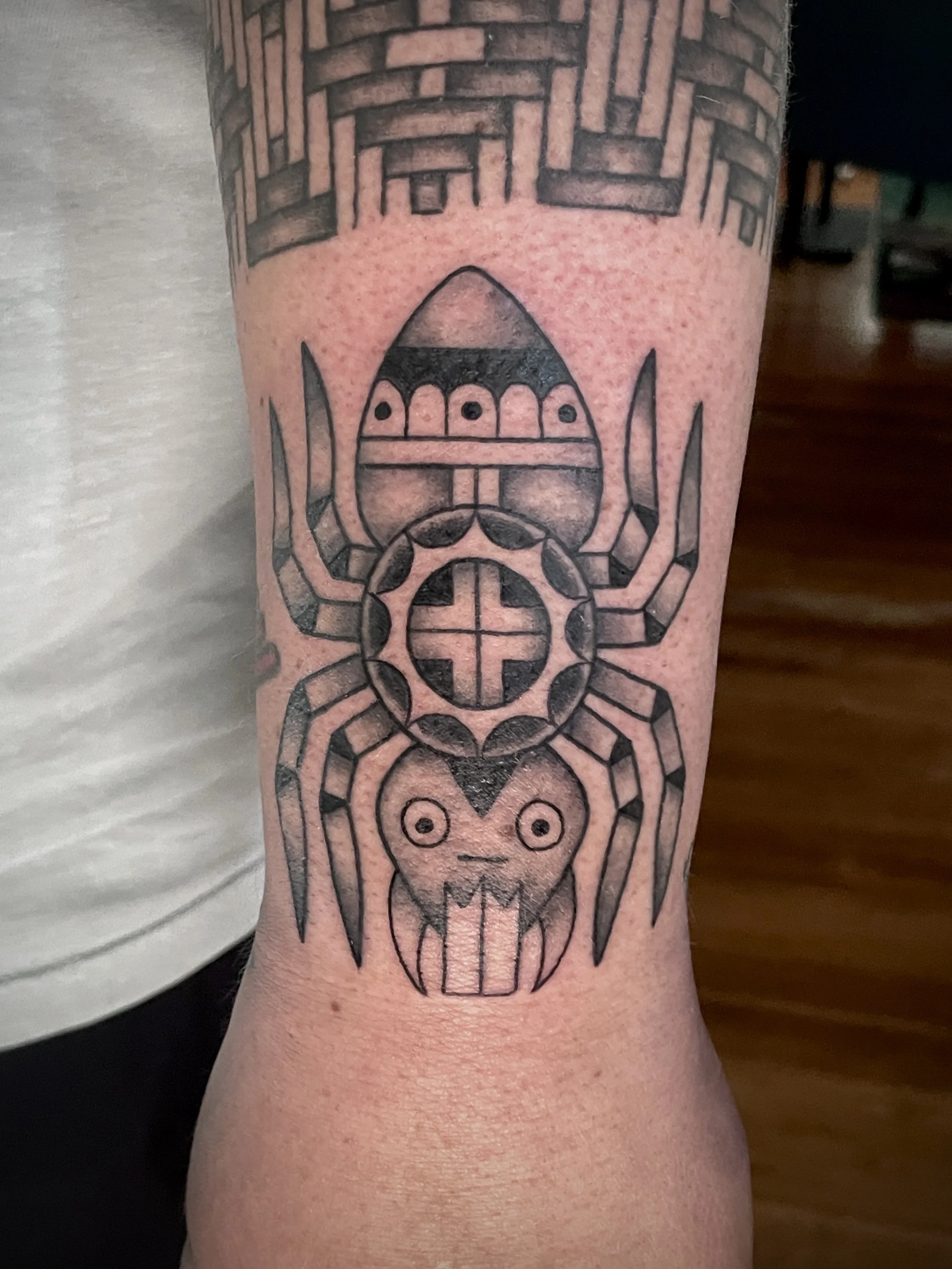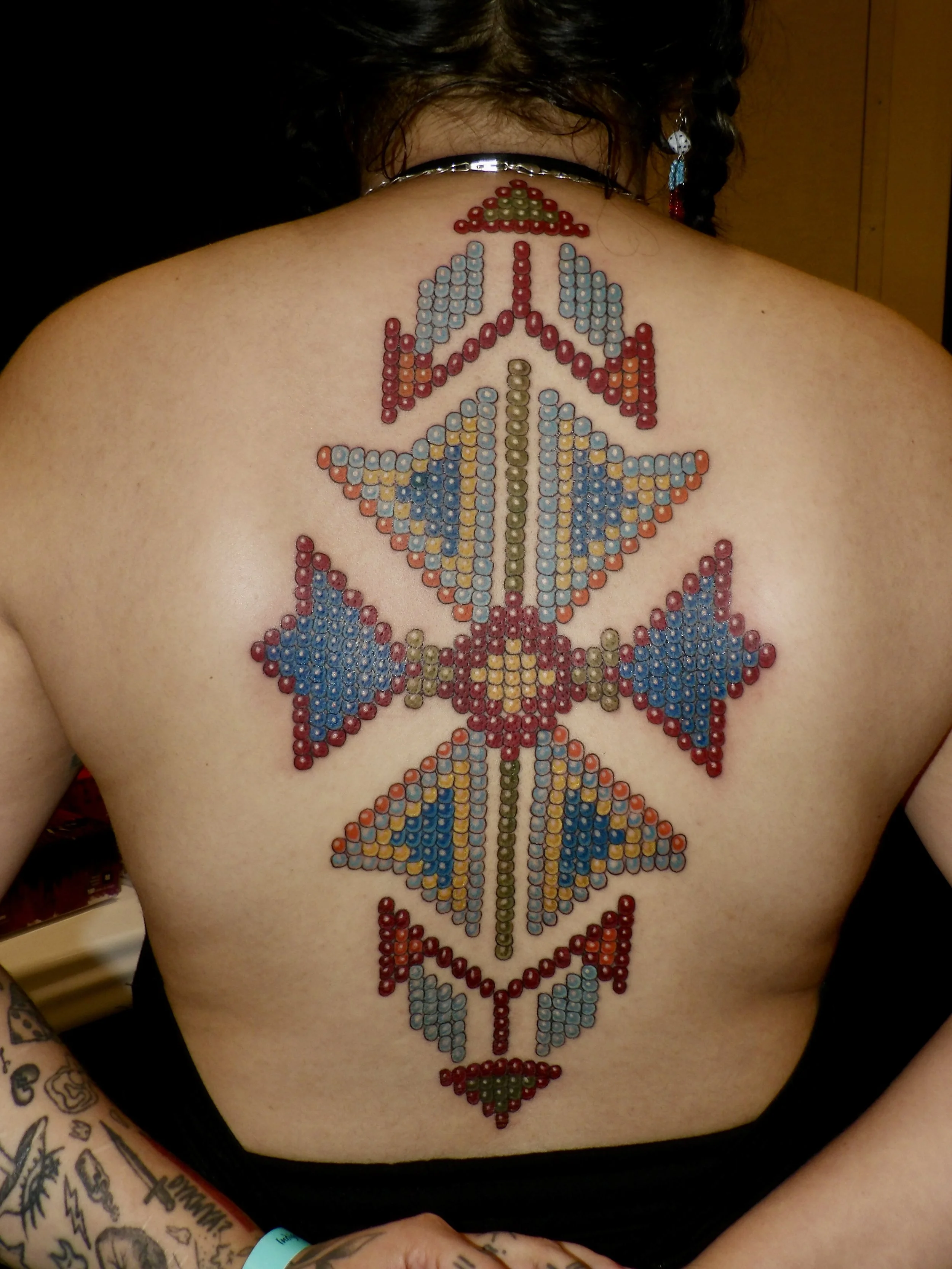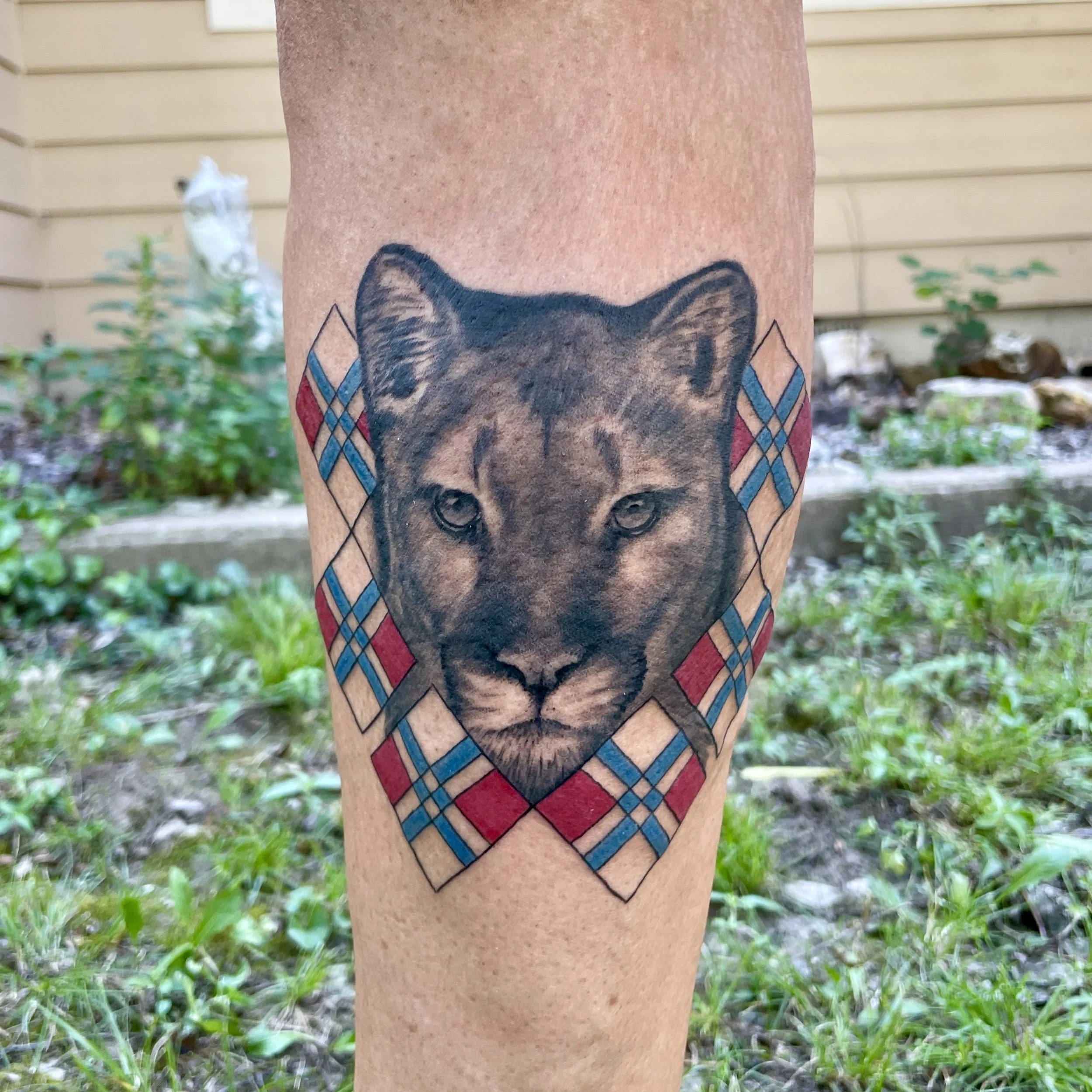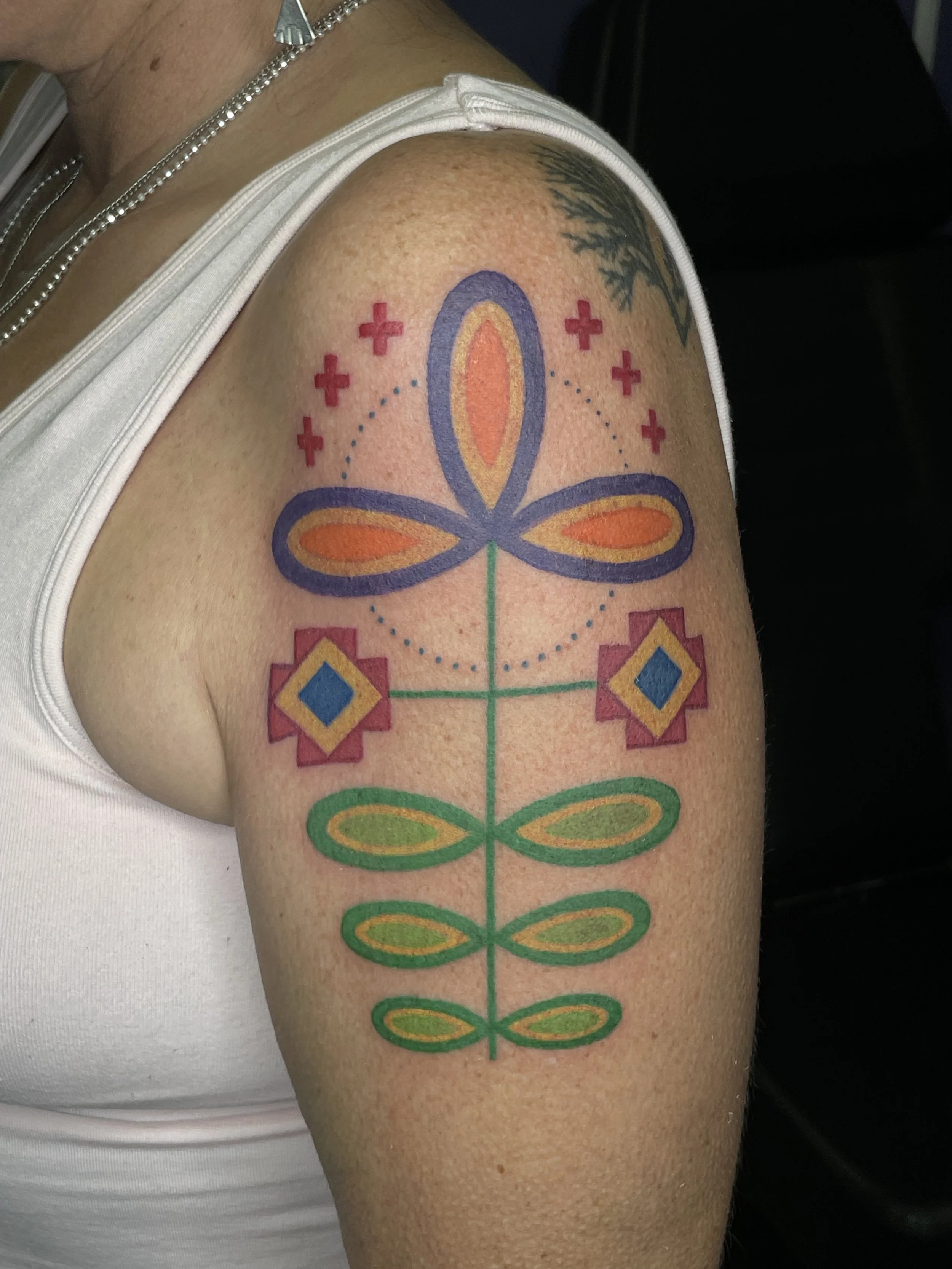Rootwork: A Conversation with Nathalie Standingcloud
From Tahlequah, Oklahoma, award-winning artist and tattooist Nathalie Standingcloud carries stories across generations—some told through ink, others through memory.
A descendant of Cherokee, Muskogee (Creek), Salish-Kootenai, Colville and Czechoslovakian heritage, her work bridges ancient traditions with modern identity, reviving the language of body art once outlawed in her home state.
Through her practice of cultural revival tattooing, Standingcloud helps clients reconnect to their heritage, honoring lineages interrupted by assimilation and silence. Each tattoo, she says, is a story made visible: a quiet act of resistance and renewal.
HYVEMIND: Hi Nathalie, thanks so much for your time! Can you tell us what you’re most passionate about sharing through your art?
Nathalie Standingcloud: Hi there! What I love most about creating art is the freedom to bring whatever comes to mind into the world as a visual expression. I’m passionate about making a safe space for people of all backgrounds to tell their stories and trust me to craft a design that best represents them.
HM: You’ve spoken about how your upbringing shaped your path. Can you tell us a bit about how you first came to see yourself as an artist?
NS: I’ve been an artist since I could hold a crayon. All of my grandparents nurtured my natural talent for drawing. My grandmother bought me art kits while my nana let me go wild in her craft room.
I was obsessed with drawing dragons and eventually my art would become more influenced by my cultural heritage as I got older. I remember creating cartoons for the middle school paper and drawing my classmates for cash. I got in trouble for drawing tattoos on myself and others during lessons.
Eventually I found opportunities to showcase my pieces in the local tribal art shows and won poster awards for tribal events. It took me a while to see my role as an artist in the world because I wasn't sure how to create a career out of it at first. It had to find me.
HM: How has making art and tattooing given you a language for parts of yourself that didn’t have words before?
NS: My father taught me how to tattoo and gave me my first one. I was unsure of what to choose to mark on my skin for the rest of my life but I knew I wanted it. My dad gave me the wise advice that people usually get tattoos that represent parts of themselves that seldom change like their family, race or religion.
I chose to get my name that was given to me during my coming of age woman’s ceremony on the back of my neck in the Cherokee syllabary. It did something to me. It gave me a sense of inner subtle strength and transformation. After enough time passed to where I would forget about it, someone would see it and ask about it. It reminds me who I am and invites conversation about the culture.
HM: Can you talk about how your Indigenous roots have shaped your sense of beauty, art and belonging?
NS: I remember when my family dressed me up to go to the powwow when I was young. Even though no one in my family danced they enjoyed dressing me in the beautiful regalia. The dancers, vendors and all of the people enjoying the music and art together was my first experience within my indigenous community.
As I got older I began to understand the complexity of my heritage. My father is Cherokee and Muskogee (Creek) and my mother is Czechoslovakian and a member of the Salish-Kootenai and Colville tribes. It has been an ongoing journey discovering the different histories and stories I’ve inherited. I’ve had to unlearn a lot of panindian stuff and search for what is accurate through my community.
HM: Were there any mentors or teachings that have stayed with you through your creative journey?
NS: One of my biggest art mentors growing up was Dana Tiger (Muskogee/Creek). She always made sure to have an art set up for the kids near her booth during the powwows and would hold competitions to encourage us to make art while the adults showed support by funding the winnings and judging.
She held culture camps where we built survival forts, shared folklore around the fire, and developed leadership skills while we kept up with cooking and cleaning of the site. We played with pottery and wove baskets. Each year she did her best to give the youth a place where we could create and experience native traditions.
HM: You are a specialist in cultural revival tattooing. Can you explain a little bit about what that means to you, and how it looks in practice with your clients?
NS: I found purpose with my tattoos when clients come to me specifically because of my background and their indigenous designs. They trust my care and precision when it comes to duplicating or paying homage to traditional imagery or symbolism that has been passed down through their families art and stories. It’s a power and a privilege.
HM: Tattooing has such a deep cultural history. How do you see it as a form of resistance or remembrance?
NS: Tattoos can be a loud way to show resistance to colonialism. When the government tried to assimilate the indigenous people of this country they forced natives to abandon many traditional ways of life including tattoos because it was seen as “savage”.
Another fun fact some people don't know is nineteen years ago tattooing was illegal in Oklahoma. Before 2006 you had to go to the surrounding states to get work done. I’m honored to be able to perform a procedure that decorates the community, honors my roots, and possibly help others with their healing or self image.
HM: What do you hope younger generations take away from your work and from cultural revival tattooing as a whole?
NS: First, as a disclaimer, I want them to know that back in the day the younger generations would have their markings temporarily painted on them before getting it tattooed. Keep that in mind before committing to any marks of your own.
I would also encourage them to keep a healthy balance between researching the stories behind the origin of their cultural visual references and saving a space for them to be uniquely themselves. The pain from this art form is transformative, universal and timeless.
I think cultural revival tattoos are also about honoring that feeling as well as the visual reward. It was a coming of age achievement for myself.
“Reconnecting to roots can sometimes become a heavy journey because of the pain of the past. Tattoos can serve as a healthy way to grieve and give that pain a place to go. ”
HM: The Indigenous arts community in Oklahoma feels especially interconnected. How does community shape your purpose as an artist?
NS: Healthy cultural reciprocation. I feel creatives are able to feed each other with inspiration by the work we share. There is always an artistic exchange that keeps us connected and energized.
For example I’ve made trades with my friends in tattoos for their works. While we are hanging out we are also sharing stories, information, and opportunities. The same happens whenever we gather for events or art shows and celebrate our crafts.
HM: Finally, what advice would you give to young Indigenous artists who are just beginning to find their voice or reconnect with their roots?
NS: It can be a heavy and frustrating journey to start. Don’t give up and try your best to find joy and fun. Ask many questions and help out so you can earn the answers. Talk to your mentors and your elders in your communities. Get involved in the art scene. Visit your local tribal heritage centers or museums. Create whatever makes your heart happy and ignore the rat races.
The world is quickly changing and your unique and authentic voices are needed!
Connect with Nathalie Standingcloud and see more of her work:
Instagram: www.instagram.com/nattatt8






